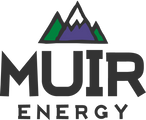Free Protein Calculator For Seniors: Nutrition for Athletes Over 50
May 16, 2022
By Lauren MacLeod (@themountaindietitian), MUIR content editor and sports dietitian
There are many changes that occur within the body as athletes age which can affect cardiovascular function, bone density, muscle strength, flexibility, and more. The top way to manage these changes is through balanced nutrition. In this article, we’ll dive into evidence-based nutrition recommendations to keep you running, skiing, biking, weight lifting, and more for years to come.
How Much Protein Should Athletes Over 50 Eat?

Protein Intake For Senior Athletes
You may have heard that you lose muscle mass as you age, but it doesn’t have to be this way! Older athletes have higher protein requirements than younger ones; research recommends 1.5-1.6 grams of protein per kilogram of body weight per day. Spreading out protein intake to 0.3 g/kg over 4-5 daily meals may also support increased muscle mass.1 It is especially important to focus on proteins that are rich in Branched Chain Amino Acids (BCAAs), such as meat, tofu, dairy products, and whey protein.2 You can boost your protein intake during training with a MUIR slow burning energy gel, which contains 3-6 grams of protein depending on flavor.
Want to calculate your estimated protein needs per meal and per day? Use our calculator below!
Note: Calculations are most accurate for athletes over age 50.
Vitamins and Minerals
Calcium
Bone mineral density decreases as you age, especially for females. This places older athletes at higher risk of bone breaks from falls and stress fractures during exercise. Consuming adequate calcium can help slow the breakdown of bones.
Nervous system efficiency declines as you age. Calcium assists in conducting nerve impulses through the body, telling you to do everything from concentrate to stepping up a trail.
High calcium foods include:
- Dairy – yogurt, milk, cheese
- Cruciferous vegetables/leafy greens: Broccoli, kale, bok choy, brussels sprouts
- Tofu
- Legumes, white beans in particular
- Sardines with bones
- Fortified orange juice or soymilk
Vitamin D
Vitamin D is necessary for maintaining calcium levels, thus playing an important role in bone building. It also transports calcium to support metabolism and muscle function. The CDC estimates 17.4% of the US population over 60 inadequate vitamin D status.3
Vitamin D sources include:
- Fatty fish (tuna, mackerel, and salmon)
- Foods fortified with vitamin D
- some dairy products, orange juice, soy milk, and cereals
- Beef liver
- Egg yolks
You can also receive adequate Vitamin D from the sun! Your skin can make vitamin D from UVB rays from the sun (UVA rays are the ones that give you sunburn). It only takes 10 minutes of exposure without coverage or sunscreen to get enough. However, make sure you are in a location that gets enough UVB rays to actually make vitamin D.
Omega-3 Fatty Acids
Cognitive decline doesn’t have to be a necessary part of aging. Omega-3 fatty acids are powerful anti-inflammatory nutrients that boost brain function, protect the cardiovascular system, and may even help with muscle growth in order athletes.4
Omega-3 Fatty Acid sources include:
- Fatty fish, such as wild salmon, tuna, mackerel, sardines, and anchovies
- Flax seeds
- Chia seeds
- Canola oil

Supplementation
One of the biggest threats an older athlete faces is decreased muscle mass, or sarcopenia. The most well-researched supplement for maintaining and growing muscle mass is creatine monohydrate, aka creatine. There are a lot of preconceived notions about creatine–it’s a steroid, it makes you “fluffy,” it’s not for women, etc. Creatine is not a steroid; it naturally occurs in animal flesh and exists within our bodies. In the human body, creatine combines with inorganic phosphate to form PCr. The breakdown of PCr can be used to make more ATP, our cells’ primary energy source.
So, what does this mean for older athletes? Creatine has been shown to increase muscle tissue mass and overall strength when supplemented during a resistance training program, compared to resistance training without supplementation.5 Creatine can be an excellent addition to your training and overall well-being as an older athlete. For a quick, efficient way to fuel workouts, many athletes also rely on energy gels. Learn more about how they support endurance in our runner energy gel FAQ.
It doesn’t take a lot of drastic changes to maintain your level of training after age 50. While this article is a guide, be sure to check with your doctor and sports dietitian before starting or stopping any supplements or changing your training.
- Jespersen SE, Agergaard J. Evenness of dietary protein distribution is associated with higher muscle mass but not muscle strength or protein turnover in healthy adults: a systematic review. Eur J Nutr. 2021.
- Moore, D.R. Protein Requirements for Master Athletes: Just Older Versions of Their Younger Selves. Sports Med 51, 13–30 (2021). https://doi.org/10.1007/s40279-021-01510-0
- Orces, C., Lorenzo, C., & Guarneros, J. E. (2019). The Prevalence and Determinants of Vitamin D Inadequacy among U.S. Older Adults: National Health and Nutrition Examination Survey 2007-2014. Cureus, 11(8), e5300. https://doi.org/10.7759/cureus.5300
- Murphy, C.H., McGlory, C. Fish Oil for Healthy Aging: Potential Application to Master Athletes. Sports Med 51, 31–41 (2021). https://doi.org/10.1007/s40279-021-01509-7
- Chilibeck P.D., Kaviani M., Candow D.G., Zello G.A. Effect of creatine supplementation during resistance training on lean tissue mass and muscular strength in older adults: A meta-analysis. Open Access J. Sports Med. 2017;8:213–226. doi: 10.2147/OAJSM.S123529.


